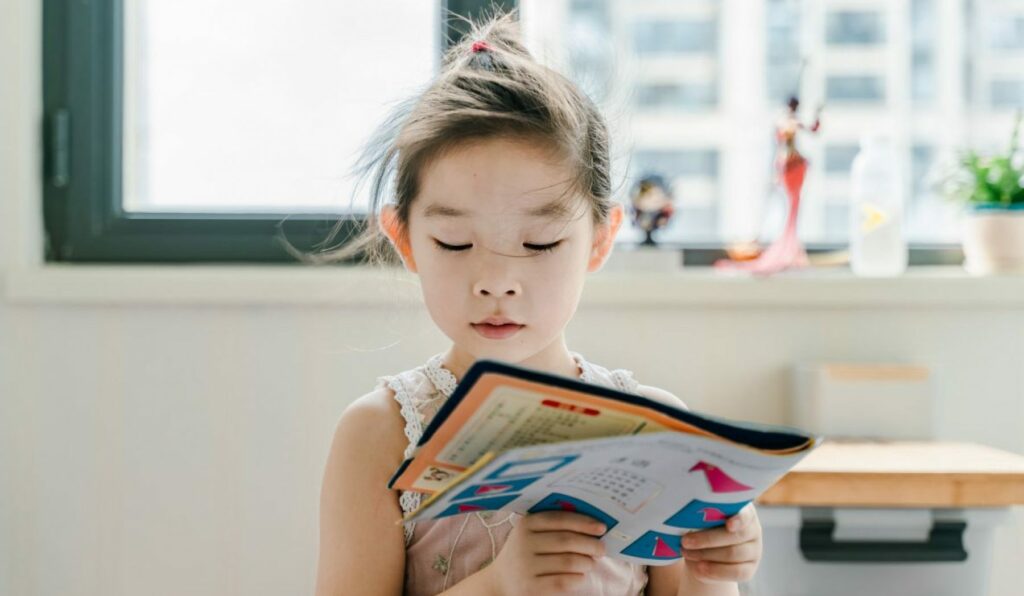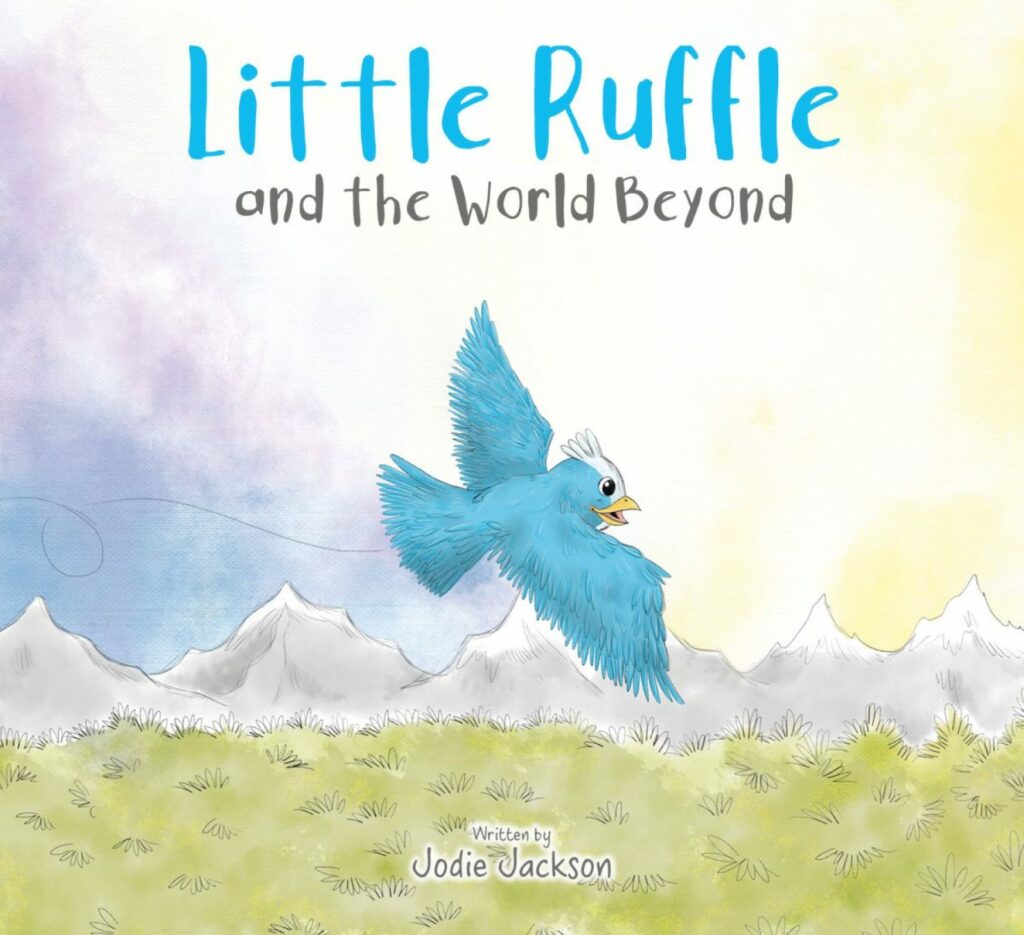Why Children, As Well As Adults, Need Stories about Solutions
TMS PEACE JOURNALISM, 19 Oct 2020
Jodie Jackson | Positive News - TRANSCEND Media Service
Jodie Jackson, author and expert on the psychological impact of the news, has now released a children’s book. She explains how, and why, it is grounded in the principles of positive psychology.
1 Oct 2020 – If adults get down and depressed when watching the news, what impact does it have on children? I had just become a mother around the time I wrote my first book You Are What You Read: why changing your media diet can change the world.
Now, pregnant with my third child, I decided it was time to package up the lessons of my research in a children’s book. Little Ruffle and the World Beyond, which was published this week, is the result.
If we want a different story,
We must take a different view,
Climb on my little darling,
I’ve got something to show to you
The book tells the story of a little bird who can’t see out of her nest, so she listens to stories about the world from her elders. As a result, she becomes afraid to fly because the world sounds like a bad and scary place. But Little Ruffle soon learns, through an adventure, that the world is filled with beauty, kindness, courage and brilliance – we just have to know where to look.
Many years of research has shown us how the relentless stream of negative news makes those who consume it feel anxious, pessimistic and depressed. These feelings linger, because we become so well-rehearsed at feeling them. By continually witnessing unresolved problems, we develop a feeling of helplessness. This is true for adults just as much as it is for younger news consumers.
Children are exposed to the news from an early age. They see or hear the news often many times a day through television, radio, conversation, newspapers, magazines and online. Even if we don’t think they are paying attention, they often pick up more than we know.
Fear is one of the first responses we might recognise in our children. They may become withdrawn or angry as a way of expressing their frustration. What is more, bad news may lead our children to develop a defeatist attitude; the belief that the problems in the world are just too big to solve.
We need to know why the world is sad,
So we ask: what’s the matter?
It’s no good us just stopping there
We need to see how it gets better
This all begs the question: what can we do as parents to both protect our children’s mental health? How can we help them be better informed about the condition of the world and the state of humanity? Organisations such as the American Academy of Child and Adolescent Psychiatry and Common Sense Media, a charity in the US, have produced guidelines on children’s news consumption. Their recommendations include limiting children’s exposure to the news, especially when the topics are difficult, dangerous, violent and disturbing.
Parents and caregivers are urged to be aware of when news might be on in the background on TV or radio, or when they have adult conversations about the news when children are in the room. Another suggestion is to explain to our children that news can be exaggerated or sensationalised to help grab our attention, so not to take it quite so seriously. They use the oft-cited ‘bad news sells’ as the reason that broadcasters pick this kind of content in a competitive media environment.
We do not have to accept that these responses come as simply collateral damage: the cost of being informed. Arguably, by reporting heavily on so many problems, children are not even very well-informed, because they are not given a complete picture of the world.
She didn’t want to leave her nest
the world seemed big and bad
The stories that were often told
made Little Ruffle sad
In an increasingly digital age, where children are plugged into technology for an average of 23 hours a week, managing what they see and hear is hard. Limiting exposure to bad news is necessary, but it is not enough. Just as for adults, it makes sense to actively increase children’s exposure to genuine, non-fluffy, well-reported news stories about solutions.
Hope and optimism are both beliefs that the future can be better than the past; not that it will be better but that it can be. When children are optimistic or hopeful, they tend to move toward the problem; this is known as active coping. It can give them the courage to both confront a problem and persevere if they do not solve it straight away.
As parents, teachers, governors and newsmakers, we need to embrace the principles of constructive journalism, as championed for many years by Positive News magazine, and apply them to the information environment of our children too. Not to shield them from the world’s problems, but to be able to see what is possible in their presence.
You see, the questions that we ask
will give us answers in return
and if we ask to see the good
there’s so much we can learn
____________________________________________
 Jodie Jackson is a campaigner, researcher and author of You Are What You Read–Why changing your media diet can change the world. She holds a Master’s Degree in Applied Positive Psychology from the University of East London. She has conducted research on the psychological impact of news information on the reader, and in particular the role of positive news and its perceived effects. She believes that it is as important to educate the consumer on these potential effects as it is to get the media industry on board. She is a regular speaker at journalism events and universities. On Twitter: @JacksonJodie21
Jodie Jackson is a campaigner, researcher and author of You Are What You Read–Why changing your media diet can change the world. She holds a Master’s Degree in Applied Positive Psychology from the University of East London. She has conducted research on the psychological impact of news information on the reader, and in particular the role of positive news and its perceived effects. She believes that it is as important to educate the consumer on these potential effects as it is to get the media industry on board. She is a regular speaker at journalism events and universities. On Twitter: @JacksonJodie21
Tags: Peace Journalism, Positive, Positive News
DISCLAIMER: The statements, views and opinions expressed in pieces republished here are solely those of the authors and do not necessarily represent those of TMS. In accordance with title 17 U.S.C. section 107, this material is distributed without profit to those who have expressed a prior interest in receiving the included information for research and educational purposes. TMS has no affiliation whatsoever with the originator of this article nor is TMS endorsed or sponsored by the originator. “GO TO ORIGINAL” links are provided as a convenience to our readers and allow for verification of authenticity. However, as originating pages are often updated by their originating host sites, the versions posted may not match the versions our readers view when clicking the “GO TO ORIGINAL” links. This site contains copyrighted material the use of which has not always been specifically authorized by the copyright owner. We are making such material available in our efforts to advance understanding of environmental, political, human rights, economic, democracy, scientific, and social justice issues, etc. We believe this constitutes a ‘fair use’ of any such copyrighted material as provided for in section 107 of the US Copyright Law. In accordance with Title 17 U.S.C. Section 107, the material on this site is distributed without profit to those who have expressed a prior interest in receiving the included information for research and educational purposes. For more information go to: http://www.law.cornell.edu/uscode/17/107.shtml. If you wish to use copyrighted material from this site for purposes of your own that go beyond ‘fair use’, you must obtain permission from the copyright owner.
Read more
Click here to go to the current weekly digest or pick another article:
TMS PEACE JOURNALISM:

